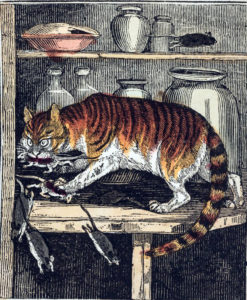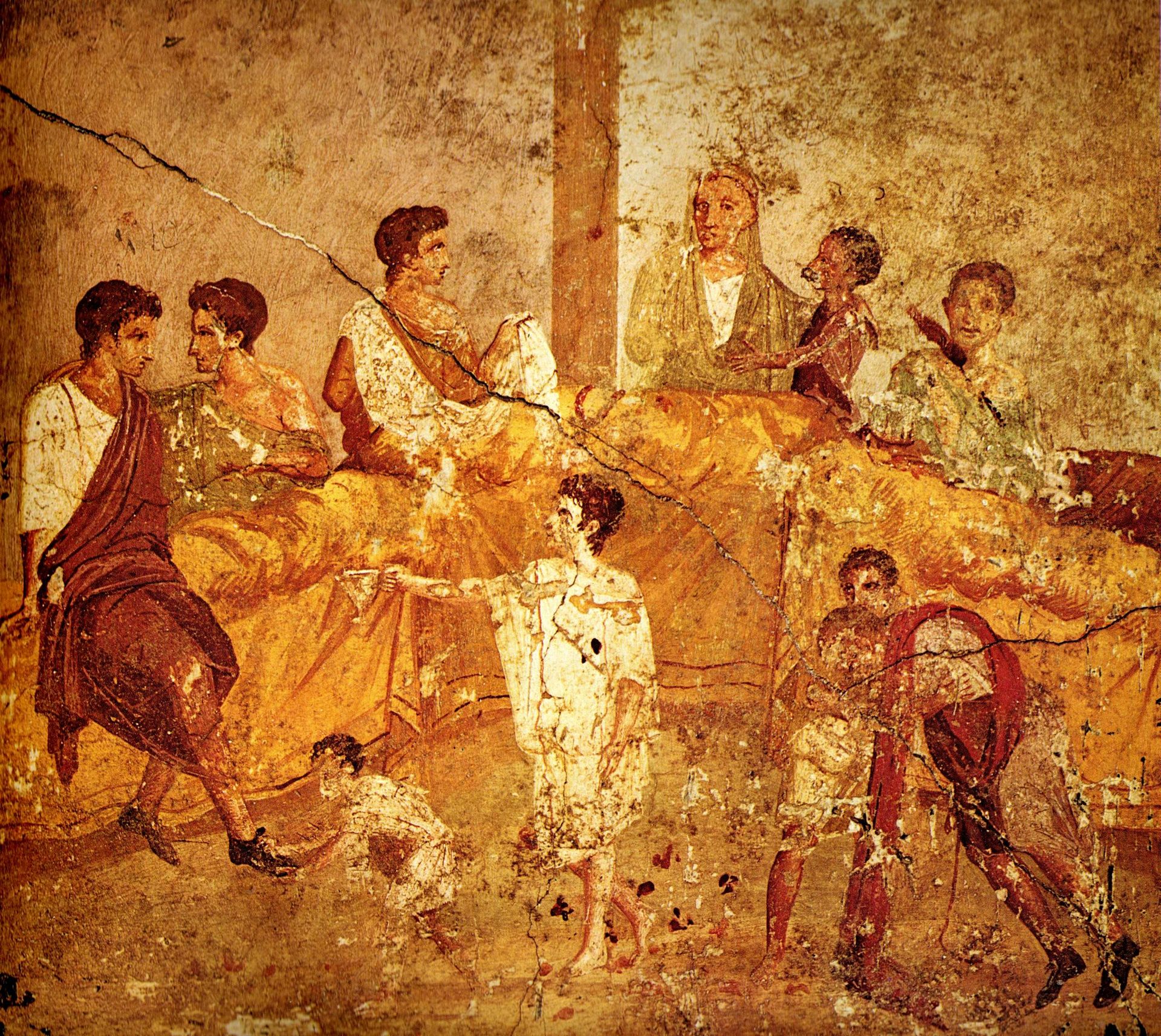Horace delights in a rustic country dinner resembling eranos, the Greek custom of dining where each guest contributes something. A guest might contribute money, food, drink, or entertainment. Horace’s adaptation of this custom required that his guest provide entertainment by conversation or telling a story. It’s real talk, Horace believes, not the social simper that animates conversation and makes an ordinary rustic repast worthwhile and truly enjoyable. The poem opens:
O heavenly night-time dinners when I and my friends
Eat beside my own, and feed jostling servants
On left-over offerings. Each guest drinks as he wishes
Large glasses or small, free from foolish rules, whether
He downs the strong stuff, nobly, or wets his whistle
In a more carefree style. And so the conversation starts.
Horace fictionalized his dinners for the Satires and made them recognizable metaphors for Roman politics and moral issues. Book II, Satire 6, is among the most widely known tales. “Though the fable is Aesop’s “The Country Mouse and the Town Mouse,” aka “De Mure Urbano et Mure Rustico,” contrasts luxury in Rome with rustic dining. Horace’s menus included much wine, but the rest is unspecified.
The irony is that Horace’s large and elegant villa was “rustic” only in the sense that it is in the town of Licenza in the Sabine Hills, about thirty miles northeast of Rome. The fable begins,
It’s said a country mouse welcomed a town mouse once
To his humble hole, the guest and the host were old friends:
He lived frugally, and was careful, but his spirit
Was still open to the art of being hospitable.
In short, he never grudged vetch or oats from his store,
And he’d bring raisins or pieces of nibbled bacon
In his mouth, eager by varying the fare to please
His guest, whose fastidious tooth barely sampled it.
At last the town mouse asks: ‘Where’s the pleasure, my friend,
In barely surviving, in this glade on a steep ridge?
Wouldn’t you prefer the crowded city to these wild woods?
For almost two millennia, no one told the story with a picnic dinner until Mary Belson Elliott adapted it for her 1809 children’s book, The Mice and Their Pic Nic. (She added a Tabby Cat, too.)

Mary Belson Elliott. The Mice, and Their Pic Nic. A Good Moral Tale (1813 edition)
*Horace’s “rustic” villa had more than twenty-seven rooms (perhaps as many as fifty-three). With the gardens, the villa covered an area of approximately two acres.
Featured Image: Feasting at Dinner in Pompei. Museo Archeologico Nazionale, Naples
See Horace [Quintus Horatius Flaccus], The Complete Odes and Satires of Horace. Translated by Sidney Alexander (Princeton: Princeton University Press, 1999). Richard Rutherford. A Concise History of Classical Literature: New York: John Wiley & Sons, 2008; Bernard D. Frischer and Iain Gordon Brown, eds. Allan Ramsay and the Search for Horace’s Villa. London: Ashgate, 2001; Bernard Frischer. “Horace’s Villa at Licenza,

